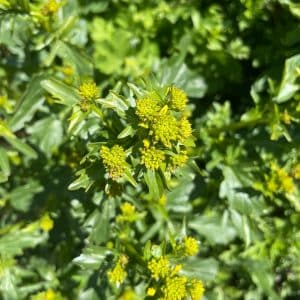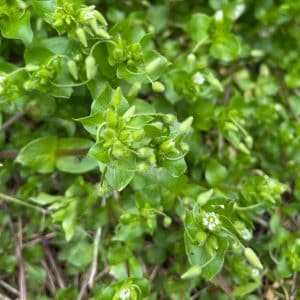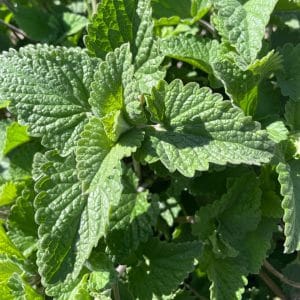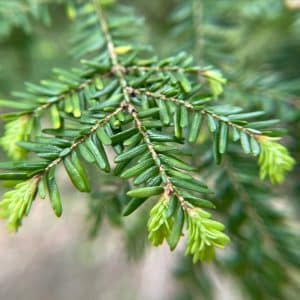The Staghorn Sumac Tree
Wild sumac is a shrub or small tree native to North America. Common to much of Michigan, the Great Lakes region and New England, Staghorn Sumac (rhus typhina) is easily identified by its fuzzy compound leaves and cone-shaped cluster of red berries. See our article on Staghorn sumac for more information.

Staghorn Sumac Health Benefits
Sumac is an ancient medicinal plant with antioxidant properties, and significant levels of Vitamin C. Native Americans used Sumac to treat colds, sore throats, fever, infections, diarrhea, dysentery and scurvy. Sumac has also been used to treat asthma and cold sores. It also lowers blood sugar, as it has hypoglycemic properties and can aid in diabetes management. Ground berries mixed with clay created a salve used on open wounds, and Sumac berries are also used in smokers by beekeepers.
Staghorn Sumac Cautions
People who have very sensitive skin or severe allergies may have an allergic reaction to Staghorn Sumac. Other plants in this family, including mangoes and cashews, can also cause irritations and inflammation. There is a similar-looking plant that is infamous as a skin irritant called poison sumac, It will give most people the same type of rash as poison ivy. The leaves look similar but poison sumac has green or white berries that hang down in bunches not red berries that go upward in a pyramidal cluster. Another minor concern for some people is that small grubs can also take up residence inside of the berry clusters of staghorn sumac.
The Staghorn Sumac Fruit
Despite these berries having a fuzzy look and feel, the Sumac fruit cluster is technically edible. But it is only really enjoyable when prepared properly. Sumac is used to make a drink called Indian Lemonade, referring to indigenous or Native Americans. The fruit ripens and becomes a maroon color from late summer to early fall. Once ripe and ready for consumption, use berries to add flavor to pies, or steep in cold or room temperature water. Avoid hot and boiling water to prevent bringing out the tannins and developing a bitter taste.
Ingredients
3-6 sumac berry clusters
8-12 cups cold water
Sweetener (honey, agave nectar, sugar, stevia, etc.)
Directions
1. Place berry clusters in plastic sandwich bag and crush slightly, if you prefer.
2. Add berries to pitcher.
3. Add water to berries and soak 8-16 hours.
4. Pour liquid into large bowl through coffee filter or layered cheese cloth to remove solids(including tiny hairs and pieces of stem).
5. Rinse pitcher and add strained tea back to pitcher.
6. Add sweetener of choice to taste and stir.
7. Enjoy.







19 Responses
Do you have pictures or examples of the lifecycle of the fruit? What does it look like when it’s ripe?
I don’t have it up on the site anywhere. You can can email me and I’ll find some more resources that might be helpful.
Can I buy this tea at a store or order on line or will I have to make it myself by scratch?
I haven’t seen it online. Now is the time of year to spot the red seed tops. I see them a lot on the side of the road. Not that you should harvest from those locations but at least you can spot them and see what they look like.
Should it be kept refrigerated while steeping?
It wont hurt to keep them refrigerated while steeping. I’ve done it that way before and they came out fine.
What’s the best time to “harvest” the berries? Mid summer? End of summer?
Definitely the end of summer, around here its usually late august, early september. The flavor gets stronger at that time. optimal time is a little different each year based on weather. If you forage too early there is less flavor…..too late and they get dried out and bug infested. Somewhere in the middle is a perfect time to harvest.
So I just found some but the leaves are yellow. Is it still good to use for medicinal purposes now?
How do you prepare sumac for long term medicinal use.? If you do everything like you’re making the tea only let the berries dry completely, powder?, then bottle to use reconstituted as needed? Thanks. Just getting started on herbal medicinal uses.
I would drink a glass before bedtime, talk about deep sleep, vivid dreams and REM sleep so much quicker. Would wake up thinking it’s early morning, but it would only be 12 – 1 am , really early morning! Have so much growing on the farm, buts it’s almost November, they are looking kinda sad. Can’t wait for next year!
The articlr nentioned that it could ge added to pies for flavour. Are you able to advise how J xan use it for pies please? Would it be the abstract of the berries?
The article nentioned that it could be added to pies for flavour. Are you able to advise how I can use it for pies please? Would it be the axstract of the berries? Do you have a recipe for this please?
The article nentioned that it could be added to pies for flavour. Are you able to advise how I can use it for pies please? Would it be the exstract of the berries? Do you have a recipe for this please?
Can you freeze the tea for year round use?
Yes you can freeze the tea. I froze it in single serving sizes so I didn’t have to thaw a lot at once. I used the large solo cups and covered them with the plastic “cover-up” that I found at the dollar store.
I can’t wait for next year as all of my tea is gone now.
If you are not supposed to use hot water, how do you make hot tea with it? I must be missing something.
Heat it up after steeping?
I use boiling water to get the flavor from the tanins. sumac, mullien, lemon balm and applemint is quite tasty.